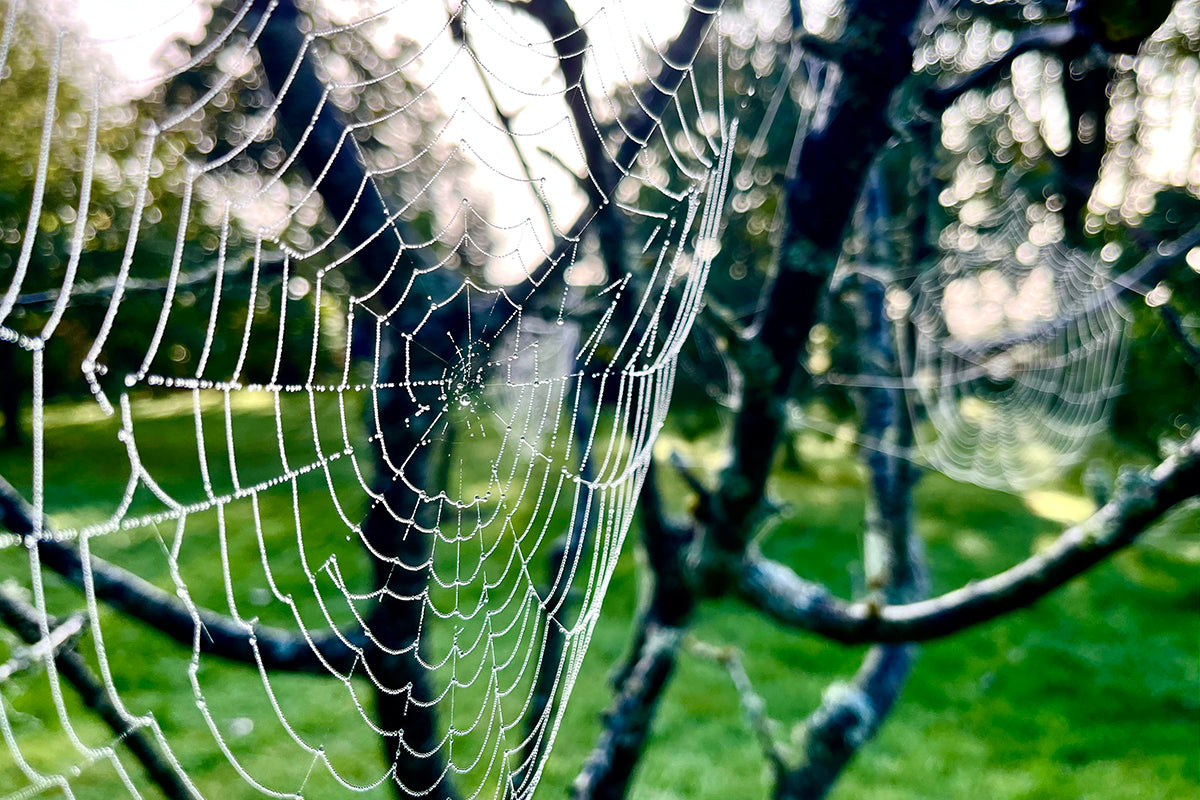On the web

With October fast approaching, early mornings in the Genus garden have been turning noticeably colder, the garden often shrouded in mist that has rolled in from the surrounding fields. Whatever the weather the lawns are always wet and the remaining dahlias bow their heads heavy with dew.
In the orchard the workings of spiders are highlighted by fine water droplets, their highwire antics looping between the trees made visible overnight. The most likely species to be creating these works of art is the European garden spider Araneus diadematus. Harmless, and sometimes surprisingly large, its bulbous abdomen is decorated with a spotted white cross. Present all year round, it’s only at this time of year that the webs become conspicuous when revealed by mist or frost.
We have a number of spider species in the garden including the much talked about false widow which has a venomous bite. Alarmed by this discovery we carried out a little bit of homework. The Natural History Museum says the venom is not particularly potent with the pain no worse than a wasp sting only lasting for 12 hours, and rarely more than 24.
One spider that we’d love to see is the harmless wasp spider Argiope bruennichi. Its striking abdomen is crossed with yellow and black bands which reflect UV light attracting inquisitive insects such as flies and moths. Originally from the Mediterranean it has made its way into southern England and is slowly spreading north. We haven't seen this stunning spider yet but with most gardening work happening at ground level we’re confident of spotting one should they ever make it into the garden.











